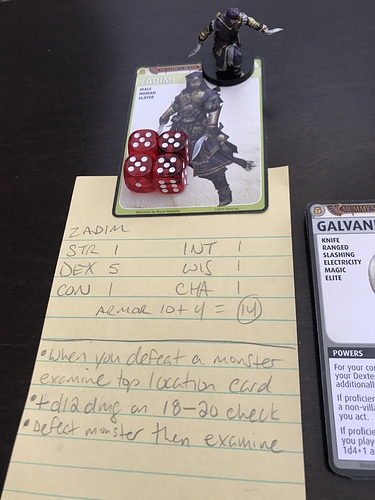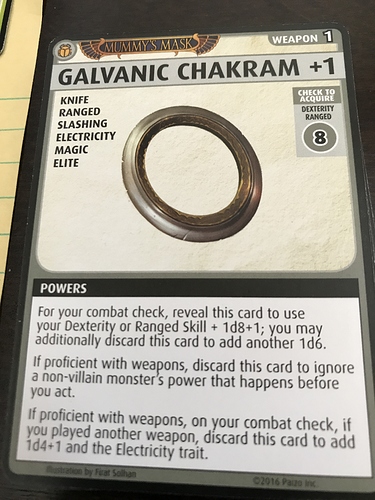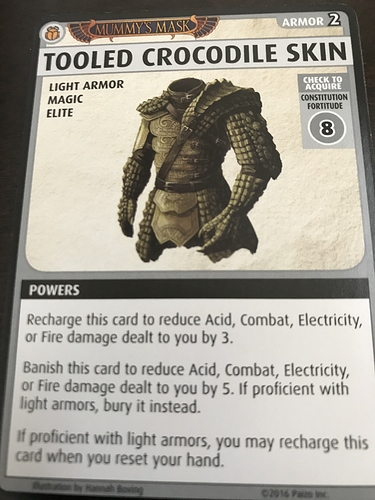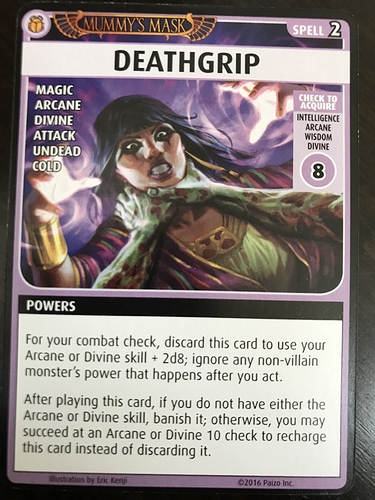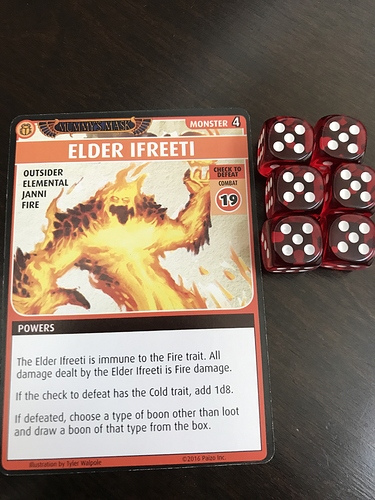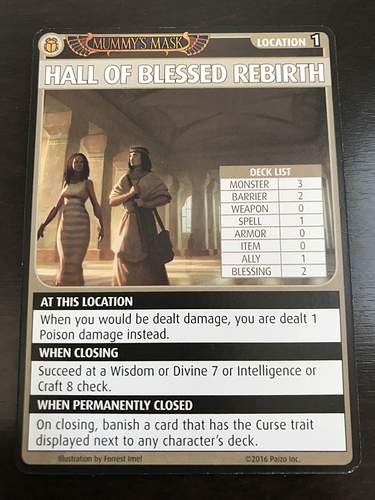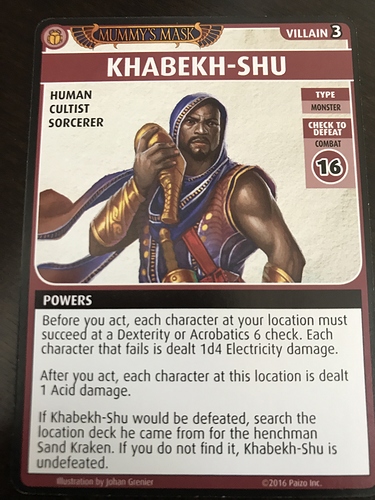So the latest game I have merged with ICRPG is the Pathfinder Adventure Card Game. It lends itself to the system very easily and is quite in line with the gist of ICRPG as everything (loot, monsters, allies, locations) is represented by cards. It is also a great way to play solo as well for those who partake in that sort of thing.
I typically play a party of 3 characters. I choose characters from the (many) options already provided and then hack their existing stats and powers into the equivalent of ICRPG stats and loot. I use the PACG’s campaign/plot line but do all the combat, trap and NPC encounters etc. using ICRPG rules. What’s awesome about this game is that this game provides escalating decks numbered 1-6. So as a general rule when I encounter a card I just add it’s deck value to 10 (i.e. an encounter/enemy from deck 5 is 15) as a “room challenge number”. It is very intuitive.
ICRPG rules with a bit of theater of the mind plus some occasional use of dungeon titles has really elevated PACG into a full on RPG experience whereas before it could be a bit of a repetitive flip card and roll experience.
If anyone here has the PACG and would like discuss or have me elaborate further, I’d be happy to.

